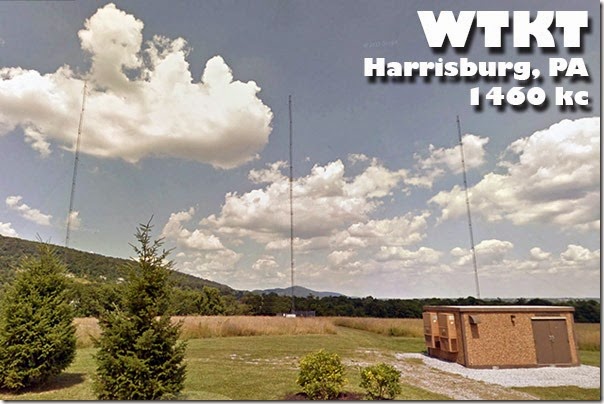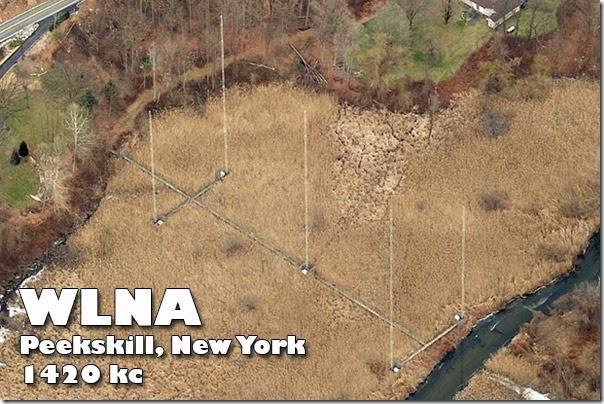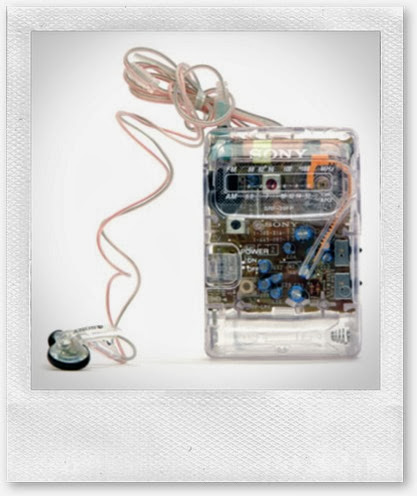My subscription to Life expired, but I still have a subscription to Mad.
Sunday, March 30, 2014
WGCH
Friday evening at 2235Z, I added WGCH to the log. Transmitting on 1490 kHz with 1 kW from Greenwich, Connecticut, 55 miles southwest, WGCH had an S0 to S1 signal as heard by my C.Crane CCRadio 2E Enhanced receiver and Terk Advantage loop antenna.
Friday, March 28, 2014
C.Crane CCRadio 2E Enhanced Reviewed Redux
Two months ago, I reviewed the C.Crane 2E Enhanced here. In general, I gave it a good review, but I had a couple of dislikes.
Here is what I wrote.
“By far, my biggest complaint is the frequency display. When you tune the radio, the radio displays the frequency, but when you stop tuning, the frequency disappears after a few seconds and displays the time, if the clock has been programmed or nothing, if the clock has not been programmed. To display the frequency again, you must press the Freq button momentarily and again, the frequency disappears after a few seconds and displays the time or nothing!
“When I am DXing, the frequency is much more important than the time of day, so I would prefer that the frequency was the default display, not the time. Or at least allow the user to select the default display. I could find no way to make frequency the default display and when I asked C.Crane about it, I never received a response.”
Yesterday, I received a response from C.Crane Customer Service rep Laurie G., who wrote, “The CCradio line has undergone many changes throughout the years and we take suggestions from our customers when we design each new model. The CCradio and the CCRadio Plus both showed the frequency all the time when the radio was playing but a button had to be pressed to show the clock, because of customer suggestions we changed the display to show the clock primarily and the frequency only when the button is pressed or station is changed.”
And so it goes.
Instead of selecting a momentary display of the frequency, why can’t that same button be programmed to toggle between continuous frequency or continuous time display? That would make everybody happy.
WSAN
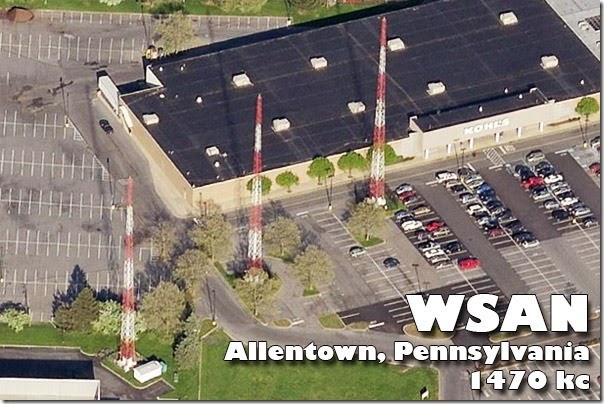
Not hearing anything new on 1460 kHz, I slid up to 1470 and nabbed WSAN at 2255Z Thursday evening. WSAN was running 5 kW from Allentown, Pennsylvania, 145 miles west-southwest. It seemed to be simulcasting sister station WAEB (790 kHz) and was a solid S-7 into the C.Crane CCRadio 2E Enhanced receiver and Terk Advantage loop antenna.
The WSAN antenna farm is in an unusual location --- in the middle of a shopping mall parking lot! I bet the antenna farm was there first and the mall was built up around it.
Wednesday, March 26, 2014
Two more on 1460
Tuesday evening, I logged two more stations on 1460 kHz (that’s five new ones in the last three days, all on 1460):
- WIFI at 2250Z transmitting 5 kW from Florence, New Jersey, 140 miles southwest with an S0 to S1 signal
- WTKT at 2255Z transmitting 5 kW from Harrisburg, Pennsylvania, 230miles west-southwest with an S0 to S5 signal
Equipment used:C.Crane CCRadio 2E Enhanced receiver and Terk Advantage loop antenna.
Tuesday, March 25, 2014
More from 1460
- WXBR in Brockton, Massachusetts, transmitting 5 kW, 100 miles east-northeast
- WVOX in New Rochelle, New York, transmitting 500 W, 65 miles southwest
Monday, March 24, 2014
WHIC
 1630Z on Sunday, I logged WHIC on 1460 kHz from Rochester, New York, transmitting 3.7 kW 260 miles to my west-northwest. Broadcasting a live Mass, I heard WHIC on both my C.Crane CC SW Pocket radio and C.Crane CCRadio 2E Enhanced radio using the Terk Advantage loop antenna.
1630Z on Sunday, I logged WHIC on 1460 kHz from Rochester, New York, transmitting 3.7 kW 260 miles to my west-northwest. Broadcasting a live Mass, I heard WHIC on both my C.Crane CC SW Pocket radio and C.Crane CCRadio 2E Enhanced radio using the Terk Advantage loop antenna.
Tuesday, March 18, 2014
WLNA
I was monitoring 1420 kHz last evening for nearly an hour listening to three, maybe four stations all down in the mud. Occasionally, one station would overpower the others and then fade back to the pack. But as the top of the hour (2300Z) approached, one station was winning over the frequency: a station playing 1960s oldies.
I suspected that it was WKCW in Warrenton, Virginia, which I had already logged. But there was no station identification, so I hung in there. Finally, at 2300Z, the station identified: WKCW.
Nuts!
But immediately after the WKCW station identification, there was a second or two of silence interrupted by another station identification: WLNA , which was a new one for my log!
WLNA is in Peekskill, New York, transmitting 1 kW 55 miles to my west-southwest. Its signal was about S-1 when it identified, as heard with my C.Crane CCRadio 2E Enhanced radio and Terk Advantage antenna.
Friday, March 14, 2014
WARE
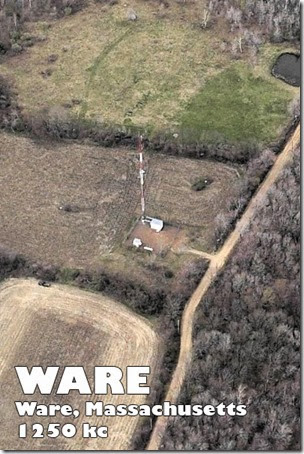 Logged WARE at 2305Z yesterday on 1250 kHz. Actually, to hear WARE I had to tune up to 1251 kHz to get away from the splatter emitting from WWCO 7 miles away on 1240 kHz. WARE is 57 miles to my northeast and its signal varied between S0 and S2 while transmitting 2.5 kW.
Logged WARE at 2305Z yesterday on 1250 kHz. Actually, to hear WARE I had to tune up to 1251 kHz to get away from the splatter emitting from WWCO 7 miles away on 1240 kHz. WARE is 57 miles to my northeast and its signal varied between S0 and S2 while transmitting 2.5 kW.
I logged WARE with my C.Crane CCRadio 2E Enhanced radio and Terk Advantage antenna.
By the way, I obtained a turntable for the Terk Advantage, which makes it much easier to accurately position the antenna (or a radio) for peak signal reception (or to null a signal).
Wednesday, March 12, 2014
Getting 1620 in the log
 Two US AM radio channels had no entries in my log: 1070 and 1620 kHz.
Two US AM radio channels had no entries in my log: 1070 and 1620 kHz.
1070 is difficult because 50-kW WTIC is 13 miles away on the opposite side of the valley and so far, I have not been able to hear anything on 1070 due to interference from WTIC on 1080. On the other hand (or other side of 1080), I have no problem hearing WBAL on 1090, so go figure.
1620 is difficult because there are only eight stations on 1620 in all the USA and none are local.
I made up my mind to tackle 1620 first. My plan was to tune all my radios to 1620 and listen to nothing until some anomaly in propagation sent a signal my way.
I did not have to listen long and heard a very weak signal way down in the mud: a Spanish station playing Latin music interspersed with current NOAA weather broadcasts in English.
My high school Spanish is not good enough to pick up enough intelligence from the spoken, broken-by-static Spanish to determine the source of the signal. But I was able to get enough intelligence from the weather broadcasts to determine that their source was a NOAA weather station in southern New England or southeastern New York.
But there are no AM radio stations on 1620 in all of New England or New York!
Google is my friend, so I Googled "1620 AM" to see what it came up with. The second item that Google found was a link to listen online to Restauracion 1620 - AM 1620 - New Britain, CT. New Britain is about 8 miles away, so I went to the webpage and when I listened online, voila! The radio signal on 1620 matched what I was hearing online with a slight delay.
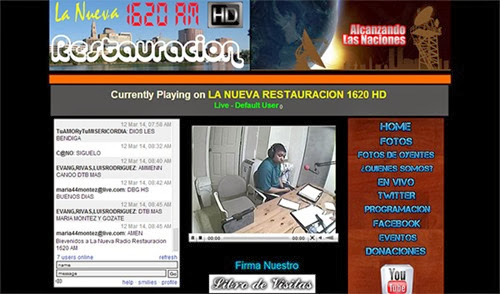
The full name of the station is La Nueva 1620 AM Restauracion (The New Radio AM 1620 Restoration) and it has a website (http://www.restauracion1620.com/), but I have not been able to determine the legal status of the operation. Nevertheless, I entered La Nueva 1620 AM Restauracion in the log and plan to tackle 1070 next.
Thursday, March 6, 2014
Clearly an Analog Radio
 The New Yorker had an interesting article about the radio of choice of prisoners in the USA: the Sony SRF-39FP AM-FM pocket radio.
The New Yorker had an interesting article about the radio of choice of prisoners in the USA: the Sony SRF-39FP AM-FM pocket radio.
This radio is made for sale only in prison commissaries; you will not find it for sale at Best Buy, but you may find it on eBay.
The case is clear plastic to prevent prisoners from hiding contraband inside the radio and it runs on a single AA battery, which is one reason why it is popular with prisoners who must budget their commissary purchases carefully.



